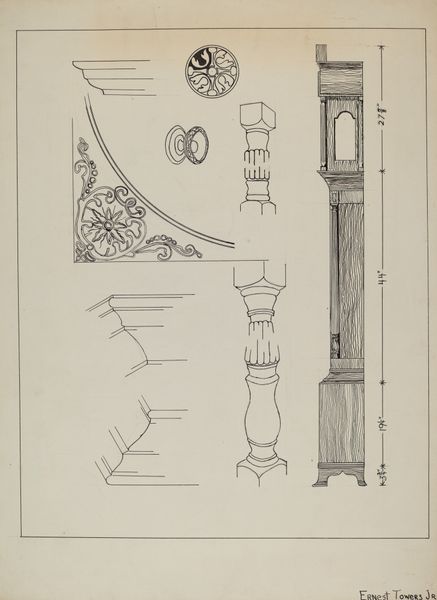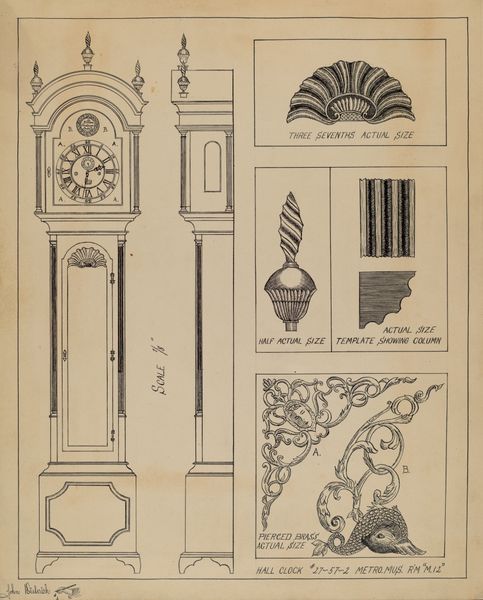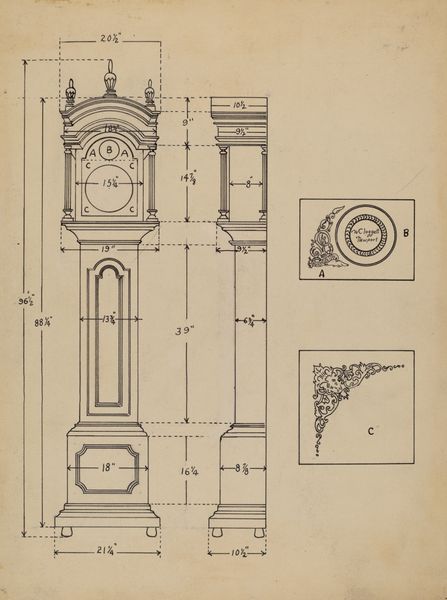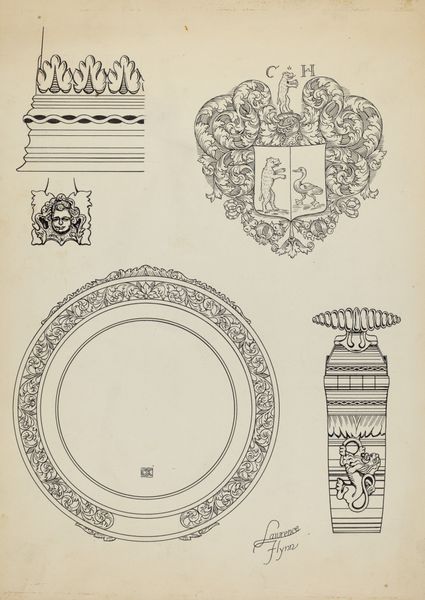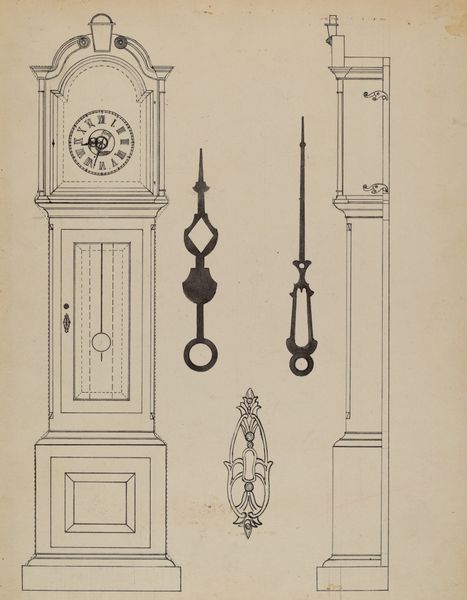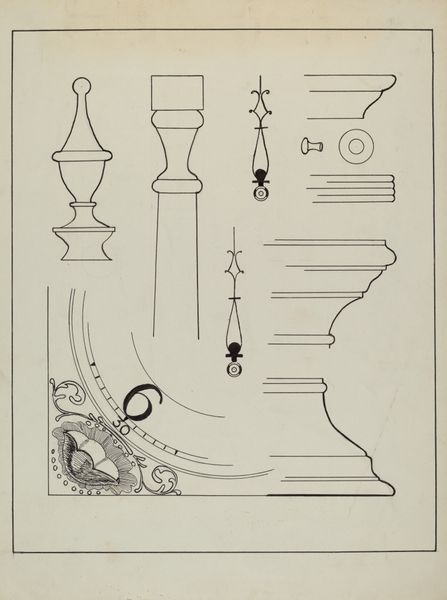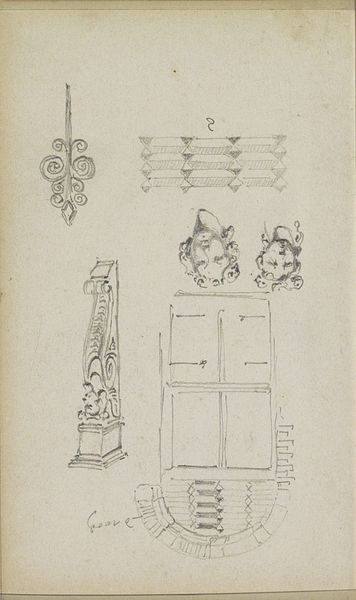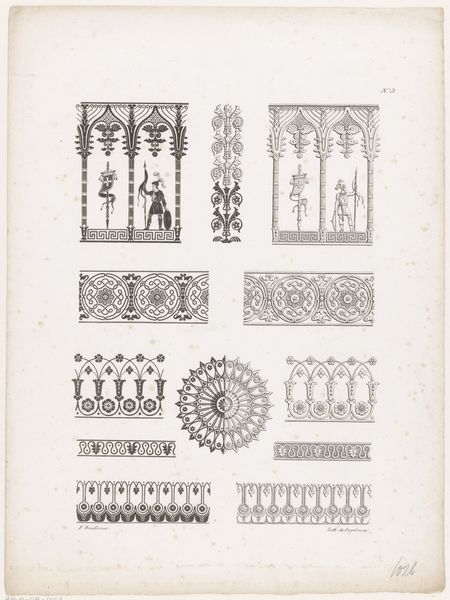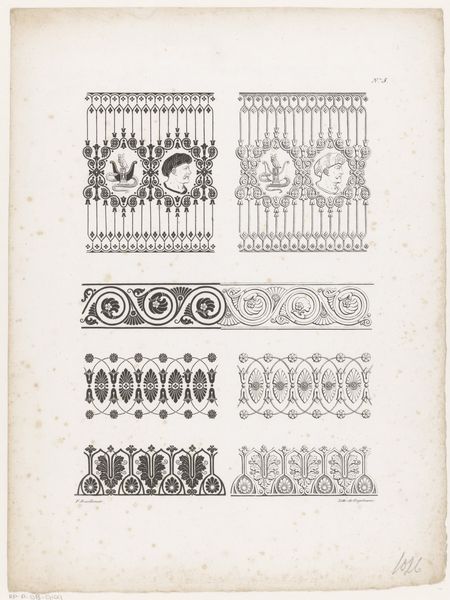
drawing
#
drawing
#
aged paper
#
toned paper
#
light pencil work
#
quirky sketch
#
old engraving style
#
sketch book
#
personal sketchbook
#
geometric
#
sketchbook drawing
#
storyboard and sketchbook work
#
sketchbook art
Dimensions: overall: 28.1 x 21.4 cm (11 1/16 x 8 7/16 in.)
Copyright: National Gallery of Art: CC0 1.0
Curator: This is "Clock," a drawing by Joseph Rothenberg, created sometime between 1935 and 1942. What strikes you most about it? Editor: It feels like a ghost of Americana, doesn't it? That eagle, the grandfather clock… they evoke a sense of a very specific, maybe idealized, past. It also makes me think of production blueprints for furniture. Curator: Exactly! The technical draftsmanship points toward design and manufacture. Consider the precision in the rendering of the clock's components and decorative elements. It really showcases a tangible link between art and industry. Editor: And what about the context? The ‘30s and ‘40s were a time of enormous social upheaval. Does this rendering of domestic tranquility speak to a longing for stability during periods of uncertainty like the Great Depression and then World War II? Is this drawing proposing that manufactured goods represent that desired feeling of normalcy? Curator: Potentially. This level of detail suggests skilled labor involved in creating the clock itself. Each carefully drawn element reflects the craftsmanship of the artisans involved. Mass-produced items held value then because they still necessitated a personalized form of making. Editor: I also wonder who would own this object. Was it created for the elite class who might own a grandfather clock? And the symbolic language! The eagle obviously represents freedom, but even the floral design points to idealized beauty. Perhaps these designs also have something to say about power, wealth, and exclusivity. Curator: It speaks to the aspirational values embedded in consumer goods. The materiality of the clock, crafted from wood and metal, becomes almost secondary to its symbolic weight. Editor: So this artwork exists as a tension point—between material value, a desire for better lives, and the social hierarchies that produce art and make furniture? I can imagine having this art as a guidepost on my wall and what that might communicate. Curator: Indeed, we’re left contemplating not only the clock's design but also its potential as a manufactured object, imbued with social and economic significance. Editor: Right. And understanding this "Clock" design through a lens of class and cultural representation gives us new avenues into engaging with the complex narratives embedded in a seemingly simple drawing.
Comments
No comments
Be the first to comment and join the conversation on the ultimate creative platform.

